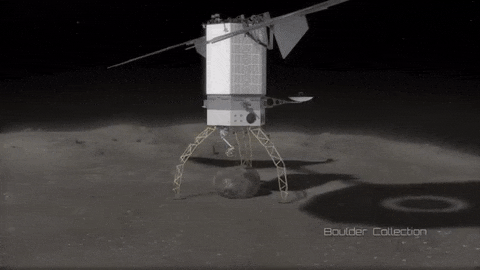Latest Posts by f-taser-blog - Page 2
Biotronium series post-2
The weather suddenly changes.. 'Oh what the Heck, as usual the weather changes suddenly' That's what we say now.But a decade back when weather suddenly changes people say 'some thing is wrong' ..Now what's exactly happening ?.Scientist and theorists say its really something wrong...really wrong - Like a global wipe out ?!.
Biotronium series Post-1 Full Story
I have posted a qoute which is took from Holy Bible - Proverbs 11;9 which is "anyone who determine to do right will live, but anyone who insist on doing wrong will die" you will understand what I meant at the end of tjis long post.Let's get to the main part.Brief.Nature warns us and reminds us to stop all those heck ! But still we say 'we got it as a habit'.You, Me and all others will not be eligible to say 'why god ?' as we makes these problems.maybe its all because of us.Right now we really are killing our environment which can be described as a gift from God.And as we are killing it maybe one day it will end up all of these.Scientists estimate that we are nearing an ICE AGE!. Here in kerala we have summer plants and trees flowerd this part of the year which is meant to be the coldest of year!.we have the temprature of 2012's summer temparture here.This may end up like a giant flood , intense drought, etc.what we can do is slow down this 'wipe out'. How can we destroy, forget, ignore , all those things that shaped our lives ?... Love your Nature, save it, It may save you.
Biotronium series post-1 "Anyone who determine to do right will live, but anyone who insist on doing wrong will die"
Holy Bible- Proverbs 11;9
Biotronium series
Hello everyone Im happy to say yo that i f-taser is releasing the biotronium series which is all connected with your biological world or Mother nature..
Visit the official JPl site of NASA and get the latest news of space.

Nikola Tesla once paid an overdue hotel bill with a ‘working model’ of his 'death beam’. He warned the staff never to open it, describing it as a war-ending particle weapon that could stop invading armies and make warfare pointless. After his death in 1943, someone finally pried the box open and found nothing but a bunch of harmless old electrical components. Source





Comet outbursts
Although European Space Agency’s comet-landing mission Rosetta ended on 30 September, the data gathered through it will keep teaching us about comets for a while.
Here are images taken by the Rosetta spacecraft’s camera when Comet 67P/Churyumov–Gerasimenko approached closest to the Sun in August. The comet became very active and outbursts occurred, a typical one thought to release 60–260 tonnes of material in just few minutes!
The outburst can be divided into three categories based on how their dust flow looks like, and the outbursts occurred both when the Sun had started to warm up the previously shaded surface, and after illumination of a few hours. [1] So the outbursts could happen in at least two different ways.
Anyhow, they provide scientists insights of cometary lives and they look pretty cool.
1. Summer fireworks on Rosetta’s comet. 23 September 2016
Copyright: OSIRIS: ESA/Rosetta/MPS for OSIRIS Team MPS/UPD/LAM/IAA/SSO/INTA/UPM /DASP/IDA; NavCam: ESA/Rosetta/NavCam – CC BY-SA IGO 3.0
Solar System: Things to Know This Week
There’s even more to Mars.

1. Batten Down the Hatches
Good news for future astronauts: scientists are closer to being able to predict when global dust storms will strike the Red Planet. The winds there don’t carry nearly the same force that was shown in the movie “The Martian,” but the dust lofted by storms can still wreak havoc on people and machines, as well as reduce available solar energy. Recent studies indicate a big storm may be brewing during the next few months.
+ Get the full forecast

2. Where No Rover Has Gone Before
Our Opportunity Mars rover will drive down an ancient gully that may have been carved by liquid water. Several spacecraft at Mars have observed such channels from a distance, but this will be the first up-close exploration. Opportunity will also, for the first time, enter the interior of Endeavour Crater, where it has worked for the last five years. All this is part of a two-year extended mission that began Oct. 1, the latest in a series of extensions going back to the end of Opportunity’s prime mission in April 2004. Opportunity landed on Mars in January of that year, on a mission planned to last 90 Martian days (92.4 Earth days). More than 12 Earth years later, it’s still rolling.
+ Follow along + See other recent pictures from Endeavour Crater

3. An Uphill Climb
Opportunity isn’t the only NASA Mars rover getting a mission extension. On the other side of the planet, the Curiosity rover is driving and collecting samples amid some of the most scenic landscapes ever visited on Mars. Curiosity’s two-year mission extension also began Oct. 1. It’s driving toward uphill destinations, including a ridge capped with material rich in the iron-oxide mineral hematite, about a mile-and-a-half (two-and-a-half kilometers) ahead. Beyond that, there’s an exposure of clay-rich bedrock. These are key exploration sites on lower Mount Sharp, which is a layered, Mount-Rainier-size mound where Curiosity is investigating evidence of ancient, water-rich environments that contrast with the harsh, dry conditions on the surface of Mars today.
+ Learn more

4. Keep a Sharp Lookout
Meanwhile, the Mars Reconnaissance Orbiter continues its watch on the Red Planet from above. The mission team has just released a massive new collection of super-high-resolution images of the Martian surface.
+ Take a look

5. 20/20 Vision for the 2020 Rover
In the year 2020, Opportunity and Curiosity will be joined by a new mobile laboratory on Mars. In the past week, we tested new “eyes” for that mission. The Mars 2020 rover’s Lander Vision System helped guide the rocket to a precise landing at a predesignated target. The system can direct the craft toward a safe landing at its primary target site or divert touchdown toward better terrain if there are hazards in the approaching target area.
+ Get details
Discover the full list of 10 things to know about our solar system this week HERE.
Make sure to follow us on Tumblr for your regular dose of space: http://nasa.tumblr.com
10 Times More Galaxies!
The universe suddenly looks a lot more crowded…
We already estimated that there were about 100 billion galaxies in the observable universe, but new research shows that this estimate is at least 10 times too low!

First, what is the observable universe? Well, it is the most distant part of the universe we can see from Earth because, in theory, the light from these objects have had time to reach Earth.

In a new study using surveys taken by the Hubble Space Telescope and other observatories, astronomers came to the surprising conclusion that there are at least 10 times more galaxies in the observable universe than previously thought. This places the universe’s estimated population at, minimally, 2 trillion galaxies!

The results have clear implications for galaxy formation, and also helps shed light on an ancient astronomical paradox – why is the sky dark at night?
Most of these newly discovered galaxies were relatively small and faint, with masses similar to those of the satellite galaxies surrounding the Milky Way.

Using deep-space images from the Hubble Space Telescope and other observatories, astronomers converted the images into 3-D, in order to make accurate measurements of the number of galaxies at different epochs in the universe’s history.
In addition, they used new mathematical models, which allowed them to infer the existence of galaxies that the current generation of telescopes cannot observe. This led to the surprising conclusion that in order for the numbers of galaxies we now see and their masses to add up, there must be a further 90% of galaxies in the observable universe that are too faint and too far away to be seen with present-day telescopes.

The myriad small faint galaxies from the early universe merged over time into the larger galaxies we can now observe.
That means that over 90% of the galaxies in the universe have yet to be studied! In the near future, the James Webb Space Telescope will be able to study these ultra-faint galaxies and give us more information about their existence.

So back to the question…Why is the sky dark at night if the universe contains an infinity of stars? Researchers came to the conclusion that indeed there actually is such an abundance of galaxies that, in principle, every patch in the sky contains part of a galaxy.
However, starlight from the galaxies is invisible to the human eye and most modern telescopes due to other known factors that reduce visible and ultraviolet light in the universe. Those factors are the reddening of light due to the expansion of space, the universe’s dynamic nature, and the absorption of light by intergalactic dust and gas. All combined, this keeps the night sky dark to our vision.
Make sure to follow us on Tumblr for your regular dose of space: http://nasa.tumblr.com
beautiful canda









First snow in the Canadian Rockies.
Banff and Jasper National Parks, Alberta, Canada. October 2016.
"To have knowledge, you must first have reverence for the Lord.Stupid people have no respect for wisdom and refuse to learn."
The Book Of Proverbs 1;7
THATS IT
What’s Up for October 2016?
What’s Up for October? Moon phases, Astronomy Day, meteors and Saturn!

The new moon phase starts the month on October 1. Of course, the new moon isn’t visible, because it’s between Earth and the sun, and the unlit side is facing Earth.

Night by night the slender crescent gets bigger and higher in the sky and easier to see just after sunset. On the 3rd and 4th, the moon will pass just above Venus!

A week later on the 9th the moon has traveled through one quarter of its 29-day orbit around Earth, and we see the first quarter phase. Also look for Mars just below the moon.

Join us in celebrating International Observe the Moon Night Saturday, October 8th, with your local astronomy club or science center. Conveniently, the 8th is also Fall Astronomy Day, celebrated internationally by astronomy clubs since 1973.

One week later on the 16th the moon reaches opposition, or the full moon phase, when the moon and the sun are on opposite sides of Earth. And the sun completely illuminates the moon as seen from Earth.

During this phase, the moon rises in the east just as the sun is setting in the west. Overnight, the moon crosses the sky and sets at dawn.

A week later, on the 22nd of October, the last quarter moon rises at midnight. Later, the pretty and bright Beehive Cluster will be visible near the moon until dawn.

To wrap up the month, 29 days after the last new moon we start the lunar cycle all over again with another new moon phase on October 30th. Will you be able to spot the one-day old moon on Halloween? It will be a challenge!

There are three meteor showers in October–the Draconids, the Taurids and the Orionids. Try for the Draconids on October 8th.

See the Taurids on October 10th.

The Orionids will be marred by the full moon on the 21st, but all three meteor showers will offer some possible bright meteors.

Finally, you’ll have an especially pretty view of Saturn, when it forms a straight line with Venus and the red star Antares on the 27th.
You can catch up on NASA’s lunar mission, the Lunar Reconnaissance Orbiter, the Cassini Mission to Saturn and all of our missions at www.nasa.gov.
Watch the full October “What’s Up" video for more:
Make sure to follow us on Tumblr for your regular dose of space: http://nasa.tumblr.com.
"Real survival is in your mind and in your heart"
Bear grills
Cosmicportal said "True love is not blind" yeah, he is absolutely right, but we could also add something to it so i think its better to say "True love is not blind enough to ignore feelings"...this could make that evenmore beautiful.
"We ourselves feels that we are doing is just a drop in the ocean, but the ocean would be less because of that missing drop"
Saint Mother Teresa
You know now a clash is going on between India and Pak, and let us pray for the soilders.. Saint Mother Teresa said "If we have no peace, It is beacause we have forgotten that we belong to each other"..
"We shall never know all the good that a simple SMILE can do"
St.Mother Teresa
LETS DO IT TOGETHER NASA :)
Mission Possible: Redirecting an Asteroid
As part of our Asteroid Redirect Mission (ARM), we plan to send a robotic spacecraft to an asteroid tens of millions of miles away from Earth, capture a multi-ton boulder and bring it to an orbit near the moon for future crew exploration.

This mission to visit a large near-Earth asteroid is part of our plan to advance the new technologies and spaceflight experience needed for a human mission to the Martian system in the 2030s.
How exactly will it work?
The robotic spacecraft, powered by the most advanced solar electric propulsion system, will travel for about 18 months to the target asteroid.

After the spacecraft arrives and the multi-ton boulder is collected from the surface, the spacecraft will hover near the asteroid to create a gravitational attraction that will slightly change the asteroid’s trajectory.

After the enhanced gravity tractor demonstration is compete, the robotic vehicle will deliver the boulder into a stable orbit near the moon. During the transit, the boulder will be further imaged and studied by the spacecraft.

Astronauts aboard the Orion spacecraft will launch on the Space Launch System rocket to explore the returned boulder.

Orion will dock with the robotic vehicle that still has the boulder in its grasp.

While docked, two crew members on spacewalks will explore the boulder and collect samples to bring back to Earth for further study.

The astronauts and collected samples will return to Earth in the Orion spacecraft.
How will ARM help us send humans to Mars in the 2030s?

This mission will demonstrate future Mars-level exploration missions closer to home and will fly a mission with technologies and real life operational constraints that we’ll encounter on the way to the Red Planet. A few of the capabilities it will help us test include:
Solar Electric Propulsion – Using advanced Solar Electric Propulsion (SEP) technologies is an important part of future missions to send larger payloads into deep space and to the Mars system. Unlike chemical propulsion, which uses combustion and a nozzle to generate thrust, SEP uses electricity from solar arrays to create electromagnetic fields to accelerate and expel charged atoms (ions) to create a very low thrust with a very efficient use of propellant.
Trajectory and Navigation – When we move the massive asteroid boulder using low-thrust propulsion and leveraging the gravity fields of Earth and the moon, we’ll validate critical technologies for the future Mars missions.
Advances in Spacesuits – Spacesuits designed to operate in deep space and for the Mars surface will require upgrades to the portable life support system (PLSS). We are working on advanced PLSS that will protect astronauts on Mars or in deep space by improving carbon dioxide removal, humidity control and oxygen regulation. We are also improving mobility by evaluating advances in gloves to improve thermal capacity and dexterity.
Sample Collection and Containment Techniques – This experience will help us prepare to return samples from Mars through the development of new techniques for safe sample collection and containment. These techniques will ensure that humans do not contaminate the samples with microbes from Earth, while protecting our planet from any potential hazards in the samples that are returned.
Rendezvous and Docking Capabilities – Future human missions to Mars will require new capabilities to rendezvous and dock spacecraft in deep space. We will advance the current system we’ve developed with the international partners aboard the International Space Station.
Moving from spaceflight a couple hundred miles off Earth to the proving ground environment (40,000 miles beyond the moon) will allow us to start accumulating experience farther than humans have ever traveled in space.
Make sure to follow us on Tumblr for your regular dose of space: http://nasa.tumblr.com
Life isn't about finding yourself. Life is about creating yourself
brainyqoutes { George Bernad Shaw
The internet of things IOT

best and also an intresting one:)


The First Irregular Moon Discovered on this Day!
On September 19, 1848, astronomers William Cranch Bond, George Phillips Bond and William Lassell discovered the first non-sperical, irregular moon orbiting the planet Saturn, which they named Hyperion (Ὑπερίων) after the Greek god/titan who was the brother of Cronus (the Greek equivalent of Saturn). Looking like a giant potato in the sky, Hyperion is the second largest non-sperical satellite discovered, measuring 360.2×266×205.4 km. Lassell and Bond both observed Hyperion independently of each other only days apart, and only a year after William Herschel had published Results of Astronomical Observations made at the Cape of Good Hope in which he suggested the name scheme for the first seven moons of Saturn, and which Lassell and Bond used when they proposed Hyperion.
Images of Hyperion courtesy NASA/Cassini
Well,well NASA just go and find some alien friends....(post by sci universe)

Well this is a bummer, but a good call considering how media is like 😄 NASA will host a teleconference at 2 p.m. EDT Monday, Sept. 26, to present new “surprising evidence” of activity from images captured by the Hubble Space Telescope.
Europa is thought to host an ocean of liquid water beneath its icy surface, and is thus considered to be one of the best places to search for alien life elsewhere in the Solar System.
If you want to know more about Europa, I recommend this infographic by space.com.
don't blame gravity for falling in love
albert einstine-bariny qoutes




